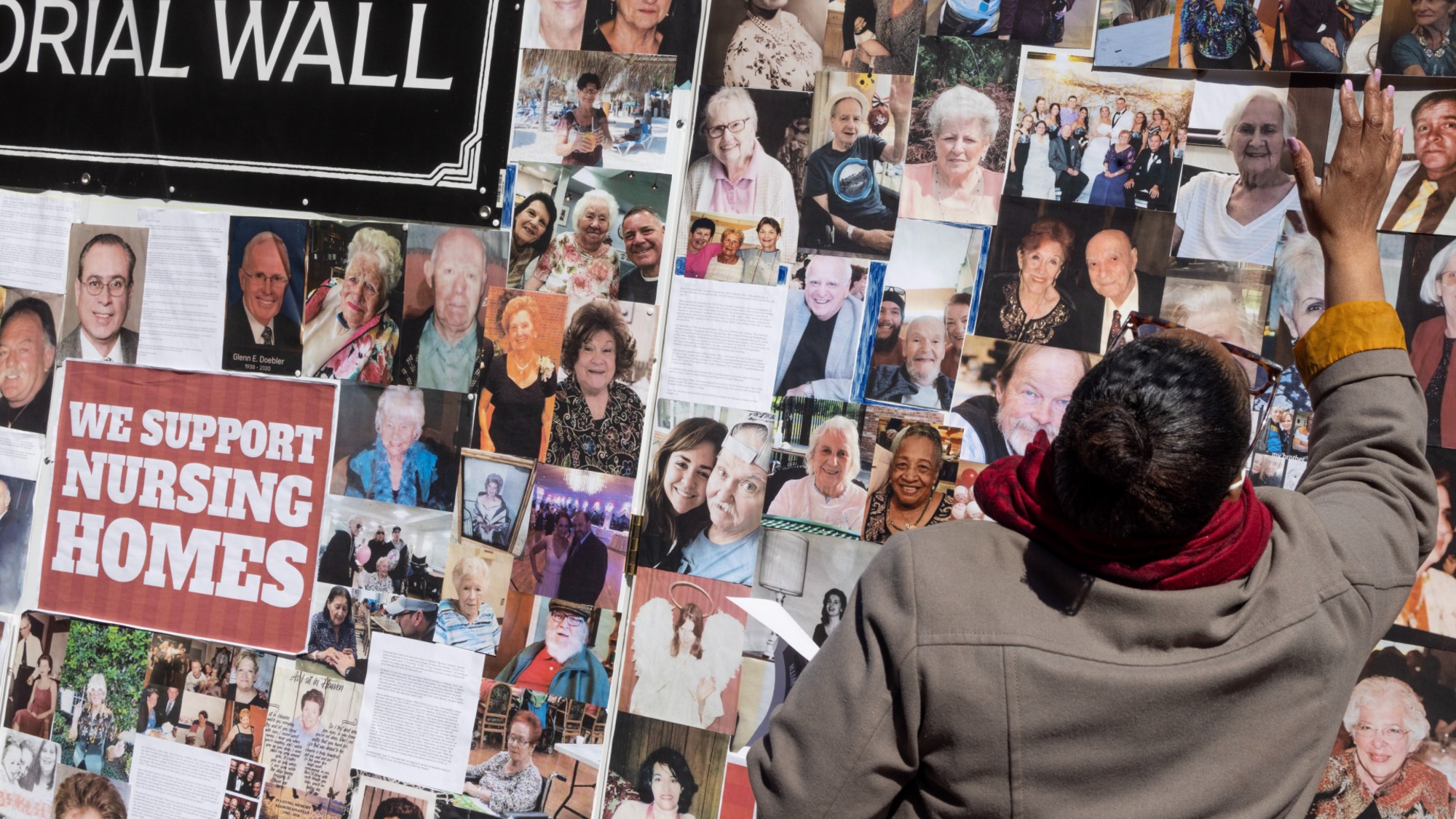Debating COVID's origins
Republicans have issued a new report on the lab leak theory and promise hearings. What does the evidence show?

Republicans have issued a new report on the lab leak theory and promise hearings. What does the evidence show? Here's everything you need to know:
What is the lab leak theory?
There are two competing theories about how SARS-CoV-2, the cause of the COVID-19 pandemic, emerged in Wuhan, China, in December 2019. Most virologists believe it originated in bats and crossed over from an intermediate animal to humans at a Wuhan "wet market," where wild animals were sold for food. This would be consistent with how previous "zoonotic" viruses have crossed over from animals to humans, including two other coronaviruses — SARS (believed to have come from bats through civets) and MERS (camels). HIV has been traced to chimpanzees, and the 1918 Spanish flu is believed to have originated in domestic or wild birds. An alternate origin theory for SARS-CoV-2 is that it was created at the Wuhan Institute of Virology, where scientists were studying bat coronaviruses. That coincidence is too glaring to ignore, say backers of the lab leak theory, which posits that the virus infected someone from the lab, who then spread it in Wuhan. A World Health Organization investigative team that traveled to China in early 2021 deemed a lab leak "extremely unlikely." But many experts felt their investigation was insufficiently rigorous, and congressional Republicans have lined up behind the lab leak theory. Senate Republicans recently issued an interim report signed by Sen. Richard Burr (R-N.C.) asserting that the pandemic was "most likely the result of a research-related incident."
What is the evidence for a lab leak?
It's all circumstantial. Lab-leak theorists point to the Chinese government's obstruction of investigations into COVID's origins and the lab's activities. They cite a U.S. intelligence report that several lab workers were hospitalized with a COVID-like illness in November 2019. Some scientists say the virus' extraordinary infectiousness among humans suggests it underwent "gain of function" alteration in a lab. A virus that "comes out of a bat cave and infects humans by the millions" is "not biologically plausible," wrote former Centers for Disease Control and Prevention Director Robert Redfield in The Wall Street Journal. Burr and others also cite the fact that virologists have been unable to find a wild animal that carries the SARS-CoV-2 virus, though similar viruses are found in bats. Many virologists dismiss the Burr report as a "load of anti-science crap," in the words of Peter Hotez, dean of the National School of Tropical Medicine. They say the evidence for zoonotic spillover is far stronger.
The Week
Escape your echo chamber. Get the facts behind the news, plus analysis from multiple perspectives.

Sign up for The Week's Free Newsletters
From our morning news briefing to a weekly Good News Newsletter, get the best of The Week delivered directly to your inbox.
From our morning news briefing to a weekly Good News Newsletter, get the best of The Week delivered directly to your inbox.
What is that evidence?
In a study published in July in the journal Science, a team of 18 scientists said detailed analysis of early COVID cases definitively shows the Wuhan wet market was the pandemic's "epicenter." By studying viruses found at the market, maps of market stalls, social media activity of early COVID cases in Wuhan, and other data, the scientists determined that all the early cases involved vendors and people who shopped there. The next concentric ring of cases affected people who lived or worked nearby. Given the "extraordinary" clustering around the market, "it's just not plausible that this virus was introduced any other way than through the wildlife trade," said co-author Michael Worobey, an evolutionary biologist at the University of Arizona. Swabs taken by Chinese health officials at the market tested positive for the virus — especially where live animals such as hedgehogs, minks, and bamboo rats were stacked in cages, creating ideal conditions for disease "spillover." A second paper published in Science cited evidence that two distinct lineages of the virus were present at the market, suggesting separate spillovers. China destroyed the animals, preventing testing. But the "vast majority of human viruses" — including all human coronaviruses — "have zoonotic origins," said a 2021 paper by 21 virologists published in Cell, which cites "no evidence that SARS-CoV-2 has a laboratory origin."
Does that end the debate?
No. As with many matters related to COVID, the origin debate is enmeshed in a red-blue rift, with many Republicans and some scientists lining up behind the lab leak theory. Democrats argue that the Trump administration and its supporters seized on the lab leak theory early in the pandemic to shift blame away from former President Donald Trump's chaotic response onto China. Republicans also point a finger of blame at White House infectious disease adviser Anthony Fauci, charging that he dismissed evidence of a lab leak because it implicated his institute, which funded viral research at the Wuhan lab. House Republicans have vowed to hold hearings on the lab leak theory.
How do we learn the truth?
We probably never will with 100 percent certainty. "There is no smoking gun one way or the other, and we may never get it," said Temple University virologist Sergei Pond. Many scientists warn that the ongoing partisan debate diverts attention and resources away from detecting and preparing for the emergence of other zoonotic viruses that could cause new pandemics. If "we've focused on the wrong problem," said Stuart Neil, a virologist at King's College in London, "we run the risk of letting this happen again."
The rising risk of virus 'spillover'
The crossover of viruses from animals to humans has spiked in recent decades due to climate change and human activity — and the problem is only going to get worse. A 2020 U.N. report said human encroachment on animal habitats was increasingly unleashing zoonotic viruses such as Ebola, MERS, and West Nile, and warned the trend would continue. A report published in Nature in April predicted that over the next half century at least 4,000 viruses will jump from one species to another as warming causes animals to migrate to new regions. "We know that species are moving, and when they do, they're going to have these chances to share viruses," said Georgetown University biologist Colin Carlson, a co-author of the study. That will create "innumerable hot spots of future zoonotic risk," he said. Many of those viruses will do little harm, but there's vast potential for a virus to emerge that could spark another pandemic such as COVID — and the next one could be far more lethal. "All of this could happen again tomorrow," said Carlson.
A free daily email with the biggest news stories of the day – and the best features from TheWeek.com
This article was first published in the latest issue of The Week magazine. If you want to read more like it, you can try six risk-free issues of the magazine here.
-
 Political cartoons for December 21
Political cartoons for December 21Cartoons Sunday’s political cartoons include Christmas movies, AI sermons, and more
-
 A luxury walking tour in Western Australia
A luxury walking tour in Western AustraliaThe Week Recommends Walk through an ‘ancient forest’ and listen to the ‘gentle hushing’ of the upper canopy
-
 What Nick Fuentes and the Groypers want
What Nick Fuentes and the Groypers wantThe Explainer White supremacism has a new face in the US: a clean-cut 27-year-old with a vast social media following
-
 Covid-19 mRNA vaccines could help fight cancer
Covid-19 mRNA vaccines could help fight cancerUnder the radar They boost the immune system
-
 The new Stratus Covid strain – and why it’s on the rise
The new Stratus Covid strain – and why it’s on the riseThe Explainer ‘No evidence’ new variant is more dangerous or that vaccines won’t work against it, say UK health experts
-
 RFK Jr. vaccine panel advises restricting MMRV shot
RFK Jr. vaccine panel advises restricting MMRV shotSpeed Read The committee voted to restrict access to a childhood vaccine against chickenpox
-
 RFK Jr. scraps Covid shots for pregnant women, kids
RFK Jr. scraps Covid shots for pregnant women, kidsSpeed Read The Health Secretary announced a policy change without informing CDC officials
-
 New FDA chiefs limit Covid-19 shots to elderly, sick
New FDA chiefs limit Covid-19 shots to elderly, sickspeed read The FDA set stricter approval standards for booster shots
-
 RFK Jr.: A new plan for sabotaging vaccines
RFK Jr.: A new plan for sabotaging vaccinesFeature The Health Secretary announced changes to vaccine testing and asks Americans to 'do your own research'
-
 Five years on: How Covid changed everything
Five years on: How Covid changed everythingFeature We seem to have collectively forgotten Covid’s horrors, but they have completely reshaped politics
-
 HMPV is spreading in China but there's no need to worry
HMPV is spreading in China but there's no need to worryThe Explainer Respiratory illness is common in winter